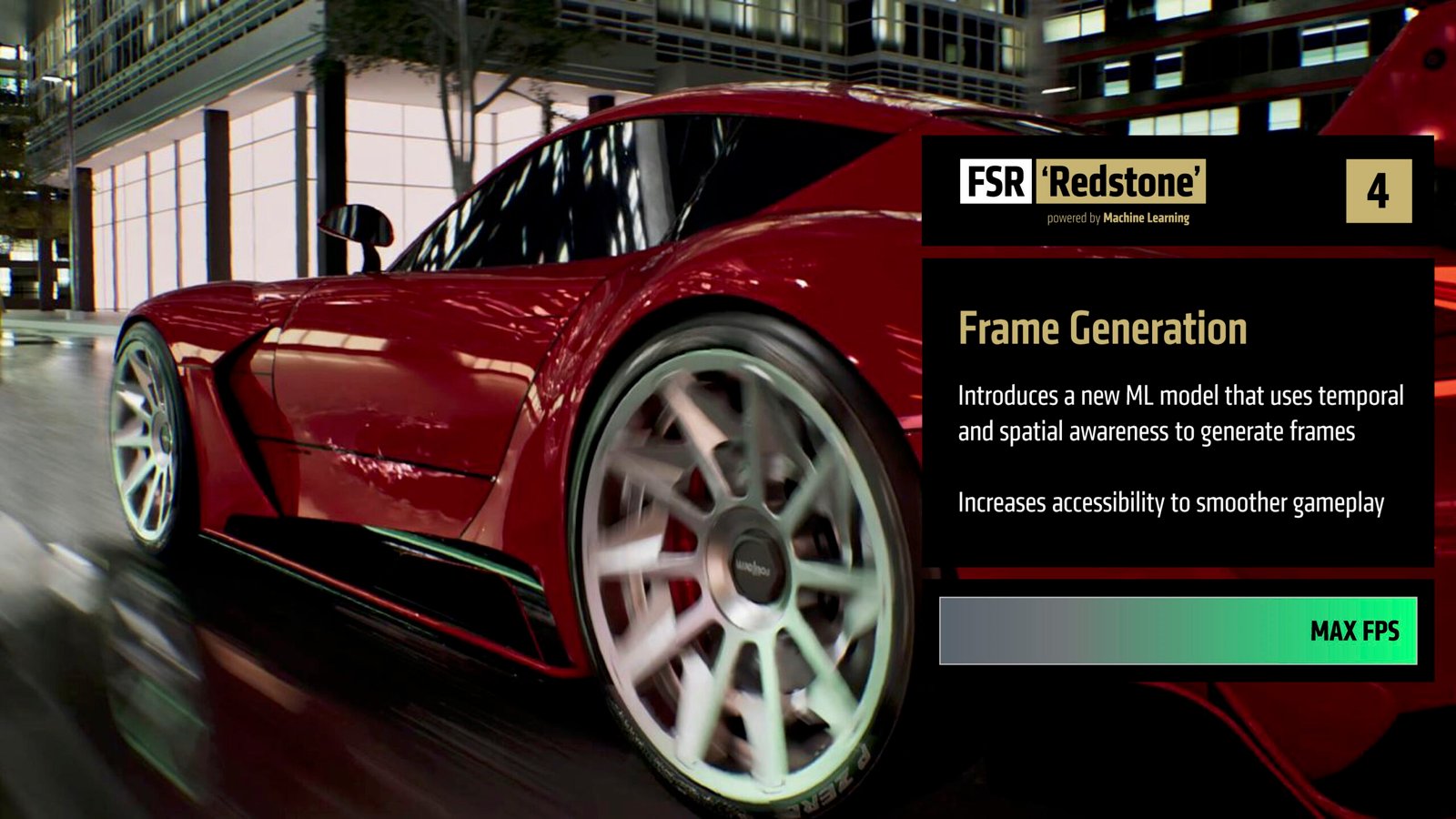AMD has recently announced the release of FidelityFX Super Resolution (FSR) 3.1.4, a significant update to its upscaling and frame generation technology, designed to enhance gaming performance and visual quality. This update, accompanied by a new plugin for Unreal Engine 5.6, sets the stage for the upcoming FSR Redstone, a suite of machine learning (ML)-powered neural rendering technologies. In this article, we explore the features of FSR 3.1.4, its role in preparing developers for FSR Redstone, and the implications for the gaming industry.
AMD FSR 3.1.4 is a minor yet pivotal update to the FidelityFX Super Resolution suite, part of the AMD FidelityFX SDK 1.1.4 release. It combines super resolution temporal upscaling with frame generation to significantly boost frame rates in supported games. Key improvements in this version include:
Enhanced Upscaling Quality: FSR 3.1.4 reduces visual artifacts such as ghosting in newly disoccluded pixels, resulting in cleaner and sharper images, particularly in fast-moving scenes.
Signed, Upgradable DLL: The update introduces a digitally signed, easily upgradable dynamic link library (DLL) that supports AMD’s FSR 4 driver upgrade feature. This allows developers to seamlessly transition to future FSR versions, including FSR Redstone, without requiring extensive game patches.
Camera Parameters for ML Frame Generation: FSR 3.1.4 includes new camera parameters to support the upcoming ML-based frame generation technology, a core component of FSR Redstone.
These enhancements make FSR 3.1.4 an essential stepping stone for developers aiming to integrate AMD’s next-generation technologies into their games.

To streamline adoption, AMD has released updated plugins for Unreal Engine 5.6, supporting both FSR 3.1.4 and Radeon Anti-Lag 2. These plugins make it easier for developers to incorporate FSR 3.1.4’s features into their projects, particularly for games built on Unreal Engine, one of the most widely used game development platforms.
FSR 3.1.4 Plugin: This plugin simplifies the integration of FSR 3.1.4’s upscaling and frame generation capabilities, allowing developers to enhance performance and visual fidelity with minimal effort. A detailed guide on installing and using the plugin is available on AMD’s GPUOpen website.
Radeon Anti-Lag 2 Plugin: Designed to reduce end-to-end system latency in GPU-bound scenarios, Anti-Lag 2 complements FSR 3.1.4’s frame generation, ensuring smoother gameplay. This is particularly beneficial for fast-paced games where low latency is critical.
By providing these tools, AMD ensures that developers can prepare their games for FSR Redstone while benefiting from immediate performance improvements.
FSR Redstone, set to launch in the second half, represents AMD’s ambitious push into ML-powered neural rendering. Designed specifically for Radeon RX 9000 Series GPUs, FSR Redstone introduces four cutting-edge technologies:
Neural Radiance Caching: Dynamically learns and predicts light propagation in a scene, enabling efficient real-time global illumination for more realistic lighting effects.
ML Ray Regeneration: Infers and restores high-quality ray-traced details from sparse samples, delivering sharp, noise-free visuals at a lower computational cost.
ML Super Resolution: Reconstructs crisp, high-quality visuals from low-resolution frames, enhancing image clarity while maintaining performance.
ML Frame Generation: Uses machine learning to predict and insert new frames between rendered ones, resulting in smoother gameplay and higher frame rates.
These features aim to rival NVIDIA’s DLSS 3.5, offering advanced ray tracing, lighting optimizations, and frame generation while remaining hardware-agnostic, meaning FSR Redstone will run on Radeon, GeForce, and Intel Arc GPUs. However, optimal performance is expected on RDNA 4-based Radeon RX 9000 Series GPUs.
Source : AMD

